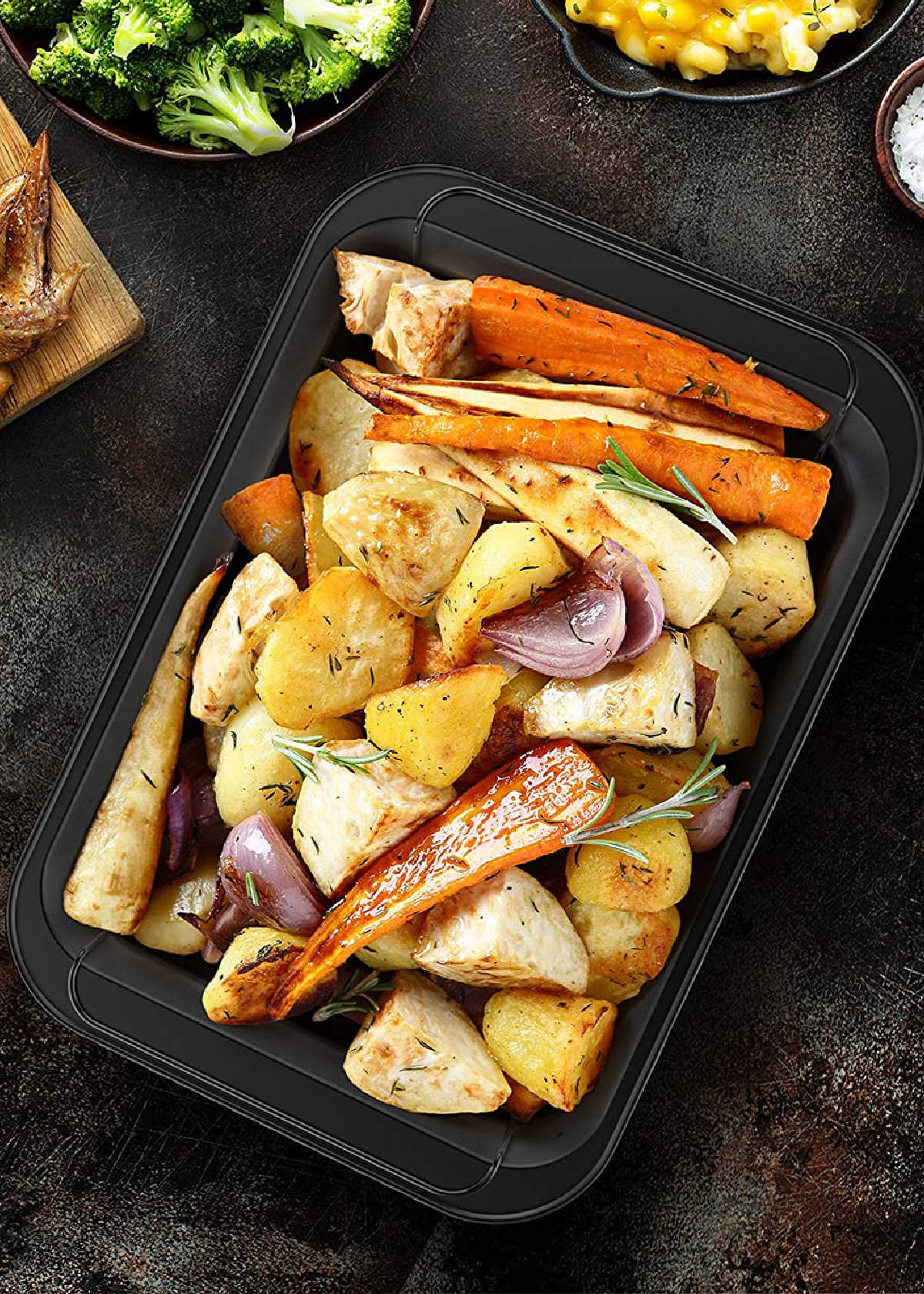Content Summary
Today, we’re exploring the world of Greek coffee – a type of coffee that will transport your taste buds to the rich and flavorful streets of Greece.
This delightful, strong brew is unique in flavor, preparation, and presentation, and it has become a staple of modern Greek culture. If you love to experiment with new flavors and techniques, then you must try Greek coffee.
We'll demystify Greek coffee, its origins, types of beans used, how it differs from other coffee types, how it's made, and a step-by-step guide on how to make a perfect cup of Greek coffee.
What Is Greek Coffee
The Coffee Beans
Greek coffee is typically made from Arabica beans, which are grown in the Mediterranean region. This type of bean is known for its bold and rich flavors and is perfect for creating that authentic Greek coffee taste.
This bean variety makes Greek coffee flavorful and strong, accompanied by an aromatic smell. The beans also need to be finely ground before being used for Greek coffee, almost like a powder, to create a smooth and creamy texture for the brew.
Another notable bean variety is Robusta, which originates from Southeast Asia, Indonesia, and Africa. This bean variety is used for setting espresso blends and provides a rich, full-bodied flavor.






The Tools
Greek coffee is different from other coffee types due to its preparation and custom. It's a brew that's unfiltered, meaning there is no paper filter or strainer.
This coffee is not prepared with an automatic coffee maker, but hand-made in a small copper coffee pot called briki with a long handle that you heat on your stovetop, or with manual methods such as a moka pot or a French press.
This allows for a unique, full-bodied taste that other filtered coffees cannot replicate. Also, Greek coffee is typically boiled along with sugar and often natural flavors like cinnamon or cardamom, giving it a flavourful and sweet taste.
As opposed to other coffee types, like espresso, cappuccino, and Americano, which are served in larger cups, Greek coffee is served in smaller, elegant porcelain cups called finikia. These cups are often adorned with beautiful patterns and painted Greek images.
The Process
The preparation of Greek coffee is a work of art, so the proper method and technique should be followed to achieve the best flavor.
- First, start by adding water to the briki and adding a teaspoon of finely ground Greek coffee (pro tip: add more to make it stronger!).
- Then, add your desired amount of sugar and natural flavors.
- Place the briki on the stove over low heat, stirring occasionally, and patiently waiting until the drink starts creating bubbles.
- Once it starts bubbling, take it off the stove, and pour the coffee into small finikia cups, making sure the grounds remain in the briki.
- Let the grounds settle before taking a sip – and there you have it!


Greek Coffee vs Turkish Coffee
Greek coffee has been around for centuries. It dates back to the Ottoman era, when Greek and Turkish cultures started trading with each other and exchanging recipes. If you know about Turkish coffee, you'll notice there are similarities between them – this is because both use the same method of preparation.
The main difference is in the grind of beans used. Greek coffee producers prefer to use either finely ground Arabica or Robusta beans, while Turkish coffee makers opt for a finely ground grind of Arabica beans.
Turkish coffee is often enjoyed hot while Greek coffee is often enjoyed cold, which is called Freddo coffee. This type of cold brew originated in Greece and is becoming increasingly popular around the world due to its creamy texture and sweet taste.




The Variations
Speaking of cups, there are different types of Greek coffee beverages.
- Classic Greek coffee: which as we’ve mentioned earlier, is quite strong, unfiltered, and brewed with sugar and flavorings.
- Frappé: is often offered in summer and is a frothy beverage served cold, made with classic Greek coffee.
- Freddo Cappuccino: cold cappuccino and espresso drink can be found in most cafes any time of the year.
- Freddo Coffee: is another refreshing coffee drink, served cold or frozen, usually made from espresso-style coffee, sugar, and water mixed and shaken up with ice.
Whichever you choose, the taste of Greek coffee is something that grabs the senses and leaves you longing for more.


Greek Coffee
Greek coffee, also known as Turkish coffee, is a variety of coffee that is finely ground and unfiltered, made in a briki (a small copper pot), and heated over hot sand.
The coffee is served in a demitasse cup with the grounds left in, and the Greeks love to have it with a shot of water and a sweet treat on the side. The coffee is strong, thick, and has a unique flavor profile with notes of chocolate, nut, and spices.
The coffee can be made using other manual methods such as a moka pot or a French press.
Freddo Coffee
Freddo coffee, on the other hand, is a modern Greek coffee variation that is served cold. The name Freddo means "cold" in Italian, and it is a frothy iced coffee that has become the go-to choice of Greek coffee lovers.
It is simple to make, refreshing, and the perfect summer caffeine boost. The coffee is made by blending espresso-style coffee with sugar and ice, then topped with a frothy layer of milk foam.
Freddo Cappuccino
If you want to take your Freddo game to the next level, then you have to try the Freddo Cappuccino. It is similar to a regular cappuccino but served cold.
You have to froth cold milk until it gets dense, and top it up with cold espresso, and a touch of sugar syrup. The combination of the milk foam and the frothy coffee will create an irresistible coffee experience.




How To Make Greek Coffee
Now let's talk about a step-by-step guide to making Greek coffee.
You'll need a briki or any other small pot-like cooking equipment, a pack of finely ground coffee, white or brown sugar, small cups to serve, and water.
Classic Greek Coffee
Here are the steps to make a perfect cup of classic coffee:
- Add 1 cup of water per cup to your pot.
- Add a teaspoon of your finely ground Greek coffee, and sugar to taste, and stir.
- Heat the pot over medium heat while stirring until it starts to get warm.
- Reduce the heat to low and continue stirring.
- When it starts to bubble up, remove it from the heat.
- Let it cool for a minute until it stops boiling.
- Continue stirring while it's cooling to prevent any coffee grounds from floating around.
- Pour the coffee using a spoon to scoop out the foam in each cup slowly.
Freddo Coffee
Making Freddo coffee is quite easy.
- Brew a classic Greek coffee (as above steps) and let it cool.
- Strain the coffee through a cheesecloth or filter to get rid of the grounds.
- Add it to a shaker with ice cubes, sugar syrup, and milk (optional).
- Shake the mixture until it gets thick and foamy.
- Pour the concoction into a tall glass.
- Top it off with a splash of cold milk or cream.
- Enjoy your delicious Freddo coffee!
Tips & Tricks
- If you want to make Greek coffee without sugar, just add a pinch of salt instead. You can also add different flavorings such as cinnamon, cardamom, or clove.
- For a richer Freddo coffee experience, add chocolate syrup or caramel sauce while shaking the mixture.
- You can even experiment with toppings like chocolate shavings or add some flavors like vanilla or almond extract.
- If you want to make it even more creamy and special, try adding a shot of ouzo, or brandy, or Greek liqueur. No matter how you prefer your Greek coffee, one thing is for sure - it will always be an unforgettable experience!
Brewing Greek coffee is a fun, unique coffee drink perfect for the home chef who loves trying new things or the coffee lover looking for something different.
Check out our pick of best briki stovetop coffee maker below and let's get brewing!
The rich flavor, characteristic aroma, and eccentricity of the brewing process all make it a must-try option.
Happy brewing!
Catchy Finds















